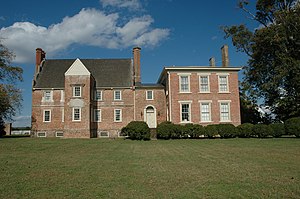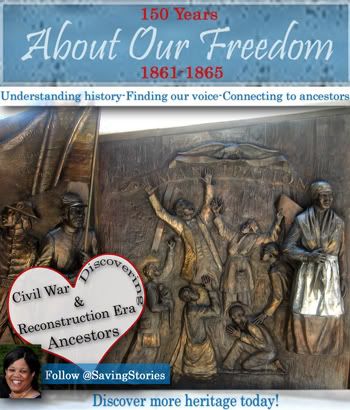Sleeping Overnight at the Bacon’s Castle Slave Quarters
We appreciate Prinny Anderson's account of her stay at Bacon's Castle as well as her sharing the history of Bacon's Castle as well as her account of how representatives of Preservation Virginia, Coming to the Table, Surry County African American Heritage Society, and others came together in support of The Slave Dwelling Project. What a great community effort!
Robin Foster
About Our Freedom
Sleeping Overnight at the Bacon’s Castle Slave Quarters
By Prinny Anderson
Robin Foster
About Our Freedom
By Prinny Anderson
The one remaining slave quarter at Bacon’s Castle, Surry, VA, is a white clapboard, four-room cabin, two rooms upstairs, two rooms down, each room home to a family, used since it was built in the late 1820’s until the last sharecropper moved out in the 1950’s. It saw 130 years of lives in bondage and servitude.
The cabin is among the outbuildings on the grounds of Bacon’s Castle, built around 1665 by Arthur Allen, and one of the only three remaining Jacobean style mansions in the Western Hemisphere. It took its name from Bacon’s Rebellion, which took place in 1676, when the house was occupied and the Allen family was temporarily driven away. http://preservationvirginia.org/index.php/visit/historic-properties/bacons-castle
Bacon’s Rebellion was an uprising of the frontiersmen, indentured people, and enslaved people, African and European. The alliance alarmed the ruling elite, and historians believe that the harsh response by the Virginia government and the racialization of slavery were among the results.
| National Register of Historic Places listings in Surry County, Virginia (Photo credit: Wikipedia) |
On October 5, 2012, about 20 people gathered in a front room of the Big House at Bacon’s Castle for introductions and conversation. In the group were two sisters, Barbara and Judy, descendants of a woman who was enslaved at Bacon’s Castle, accompanied by the pastor of a large Surry County, VA, church. Jennifer came all the way from Texas on a trip researching her Virginia ancestors, and Allison came to report the experience for the Daily Press. There were three college students, and Jennifer, Lou, Joe, and Ed from Preservation Virginia (PV) (http://preservationvirginia.org/ ), the Surry County African American Heritage Society (SCAAHS) (http://www.surryafricanheritage.com ), and the Surry County Historical Society (SCHS) (http://surrycounty.pastperfect-online.com/ ). Our convener for the evening was Joe McGill, whose Slave-Dwelling Project (SDP) was critical to the event (http://www.lowcountryafricana.com/tag/slave-dwelling-project/ ) and three of his fellow members of the Coming to the Table community, Toni Battle and Devin Berry, who had flown in from California, and Prinny Anderson, who drove in from Durham, NC. (http://www.comingtothetable.org/ ). We owe many thanks to the PV staff and friends who had the vision to create this historic event, who worked to shore up the cabin’s chimneys and floors, who made all the arrangements to make the stay safe and comfortable, and who stayed late and woke early to bring us food.
Group members had many reasons for showing up that evening to do something most of us, other than Joe McGill, had never done before. Repeated themes in our introductions were the desire to honor and acknowledge the lives and work of the enslaved people as important in American history and essential to its economic survival for 3 centuries.
After a tasty picnic meal of ham biscuits, peanut soup, vegetables, and apple fritters under the bright lights over the work yard behind the mansion, we moved to the slave cabin and set up our sleeping spaces. Joe McGill and Jennifer Hurst (Preservation Virginia) wrestled with the technology in an effort to provide streaming video via YouTube and an online chat through Facebook – both challenging with 4G connection only and no wifi.
 As the evening darkened into night, we rededicated our sleeping quarters to the sacred memory of the enslaved ancestors who had lived there, and in an outdoor circle and we called to mind family members and ancestors who represented our connections to the place and to one another.
As the evening darkened into night, we rededicated our sleeping quarters to the sacred memory of the enslaved ancestors who had lived there, and in an outdoor circle and we called to mind family members and ancestors who represented our connections to the place and to one another.
Something about dedicating the space and our actions along with the darkness, the mild breezes, and the dim lanterns seemed to encourage forth the questions and truths that were resting on our hearts and minds. What kind of strength and courage allowed the former inhabitants of this cabin to endure? How could we, today, even begin to imagine their daily lives? What kind of belief system allowed the European landowners to own, trade and oppress the imported African people? Why did “black” become “bad”? What’s up with white people, such that individual and institutional racism persist? What prevents white people from seeing the harm and from dismantling the systems that perpetuate it? What will it take to get white people to change?
We told about the family stories and the traditions of our faiths and our foremothers and forefathers that brought us to this place and these questions, the stories and traditions that sustain us through the sorrow and pain. We talked about managing the anger, finding ways to speak truth without alienating those who need to hear – learning to “catch more flies with honey,” as Joe put it. We talked about living with the shame and sadness of recognizing today how many years of oppression, harm and destruction we and our kin had perpetrated. And all through the conversations, wove personal stories, family stories, memories, and questions. By the time we fell asleep, Barbara and Judy had convinced us that the loving presence of Grandmother Camilla was smiling on us, and in the morning, we were awakened by the dawn call to prayer.
On the 6th, Preservation Virginia held “History Day” at Bacon’s Castle. Speaking to the visitors, Jennifer described the history of the slave quarters and Joe told stories of the Slave-Dwelling Project. Toni, Devin and Prinny spoke about why they had spent the night and what it was like. The visitors shared their stories. One woman pointed out where her family’s cabin had been and recounted the hard realities of the sharecroppers’ lives. A student who had heard Joe McGill speak the day before at his middle school told how he had insisted that his mother bring him to Bacon’s Castle for another dose of history.
 CTTT’s Art Carter drove over from the Eastern Shore of Virginia to meet people from the African American Heritage Society. CTTT’s involvement in this particular SDP sleepover began several months ago when PV and Joe McGill invited us to partner with them, not just for this occasion, but potentially on an ongoing basis. In parallel with The Slave-Dwelling Project’s mission of bringing recognition to the lives and contributions of the enslaved Africans, PV wants to encourage SCAAHS and SCHS to take their interest in local history to another level of telling the meaning of the histories of the people, the land, the lives, and the events, and weaving local history into American history, making the stories of African Americans, Native Americans and European Americans of Tidewater Virginia into the stories of all Americans.
CTTT’s Art Carter drove over from the Eastern Shore of Virginia to meet people from the African American Heritage Society. CTTT’s involvement in this particular SDP sleepover began several months ago when PV and Joe McGill invited us to partner with them, not just for this occasion, but potentially on an ongoing basis. In parallel with The Slave-Dwelling Project’s mission of bringing recognition to the lives and contributions of the enslaved Africans, PV wants to encourage SCAAHS and SCHS to take their interest in local history to another level of telling the meaning of the histories of the people, the land, the lives, and the events, and weaving local history into American history, making the stories of African Americans, Native Americans and European Americans of Tidewater Virginia into the stories of all Americans.
CTTT hopes that through its participation in these events and whatever further activities are planned, it can support PV, the Heritage Society and the Historical Society in continuing the conversation about the issues raised during the night at Bacon’s Castle and in reaching the goals sketched out at the SCAAHS meeting three weeks before.
Links to the Daily Press stories about the October 5/6 overnight and a video made by Allison Williams, the reporter, about the Slave-Dwelling Project’s work.
Announcement of overnight: http://www.dailypress.com/news/isle-of-wight-county/dp-nws-soj-notebook-1005-20121004,0,1860127.story
First story: http://www.dailypress.com/news/isle-of-wight-county/dp-nws-slave-dwelling-project-20121008,0,6496097.story
Reflections from reporter: http://www.dailypress.com/news/isle-of-wight-county/dp-nws-soj-notebook-1012-20121011,0,549403.story
Video – Slave Dwelling Project: http://www.dailypress.com/videogallery/72790797/News/Video-Slave-Dwelling-Project
Photos courtesy of
Preservation Virginia website
Low Country Africana website
Surry County Historical Society website
Toni Battle Coming to the Table Facebook posting
Tags:
Bacon's Castle
Coming to the Table
Joseph McGill
Joseph McGill Jr
Preservation Virginia
Prinny Anderson
Surry County African American Heritage Society
The Slave Dwelling Project


































0 comments